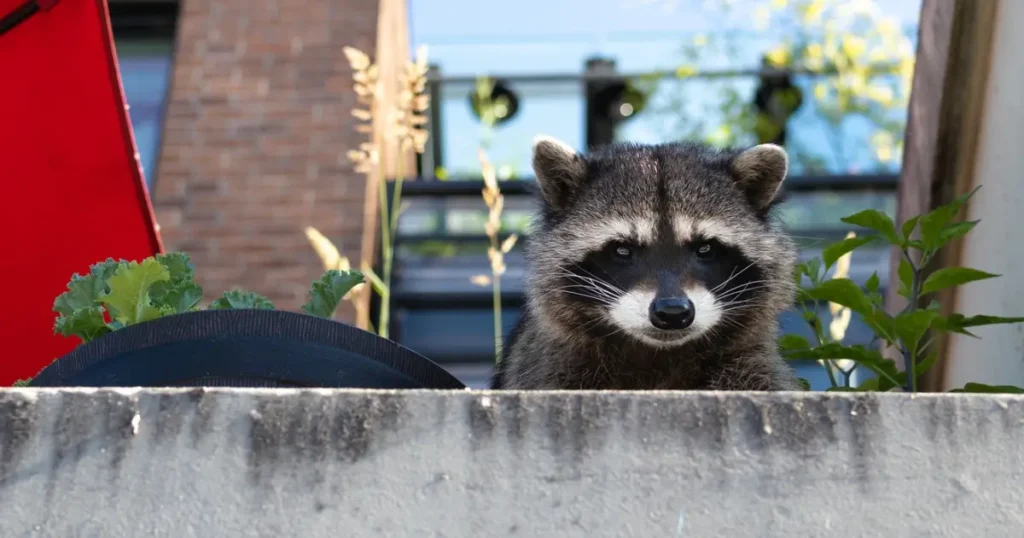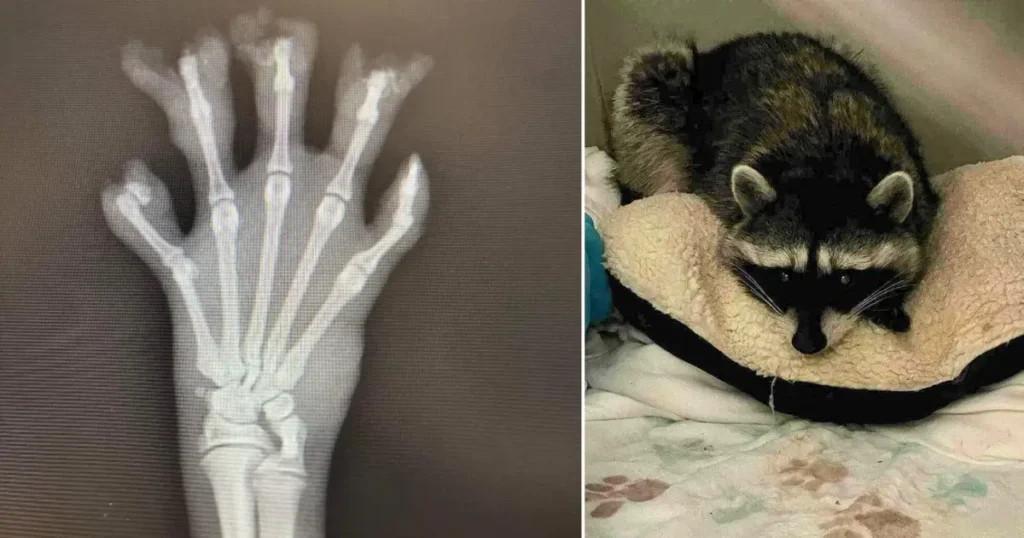
Photo by Petra Richli
Raccoons (Procyon lotor) are a common animal across much of North America, and can be found in almost all Canadian cities. While raccoons play a vital role in ecosystems, and are intelligent, deeply emotional animals, their activities can create issues for homeowners and businesses.
Here’s a few things to know if you’re trying to prevent issues with raccoons from arising – or need to mitigate some already in place:
1 Traps designed to “humanely” catch raccoons cause significant injuries. Egg or duke-cuff traps, leg-hold traps, and other steel traps are designed to hold an animal against their will and have led to serious injuries and even death. Wildlife rehabilitators frequently must contend with the maiming of animals caused by these traps (click here). These traps indiscriminate – regardless of the target, they can be activated by many species.

Images provided by Critter Care Wildlife Society
2 Traps designed to catch and kill often don’t. Heavy-duty snap traps designed for killing rodents may not be as effective as designed and will only cause injury to many species. Placing these traps outdoors is particularly dangerous as, like with steel traps, they are indiscriminate in what animals activate them.
3 What resources are nearby? If you’re finding many raccoons in your yard or around your property, a good question to ask is what resources are nearby that they may be accessing. This could be a common attractant like unsecure garbage (or dumpsters), ripened fruits and vegetables, carrion, bird feeders, or outdoor pet food. It could also be the result of someone directly feeding wildlife. Until resources that are encouraging the presence of wildlife are removed, you can expect to find animals nearby. Click here to find a full attractant checklist!
4 Raccoons will return for their kits. If you have raccoons in your home, under your shed or deck, or in your business, it’s vital to contact a humane wildlife removal professional who can identify if any babies are present. Failing to safely remove the raccoon’s babies will result in a raccoon desperate to get their way back in – to the point of injuring themselves or causing damage to property.
How to Keep Raccoons Out
Raccoons are a species native to much of Canada and play a vital role in managing various populations, spreading native plants, and more. When they are in our spaces and creating issues – such as damaging attics – there are ways to humanely remove them – and ensure they don’t get back in.
- Work with a humane wildlife removal expert. You can locate a local agency by visiting AnimalKind.ca (for the only humane accredited removal services in British Columbia), or speak to your local wildlife rehabilitator or SPCA branch for a recommendation.
- Do a seasonal check around your home, looking for entry points. These can include loose soffits and eaves, broken siding, pre-existing gaps underneath sheds, or decks, loose or exposed roofing, and so on. If you’re unable to manage these repairs on your own, humane wildlife removal agencies may be able to provide recommendations for local contractors.
- Keep on top of attractants. Unsecured garbage (including bins they can knock over), unrinsed recyclables, outdoor pet food, and fallen bird seed are major attractants for raccoons, as well as rodents and other local wildlife. Ensuring that your property is as attractant free as possible will reduce the chances of a raccoon looking to setup a den in or around your home.
- Give them space. Raccoons are wonderfully intelligent problem-solvers who are necessary to our ecosystems. The presence of a raccoon(s) does not mean they will try to get into your home, eat your gardens, or cause other problems. Monitor their presence, and work with a local wildlife rehabilitator or naturalist group to understand their behaviour if you have concerns.
